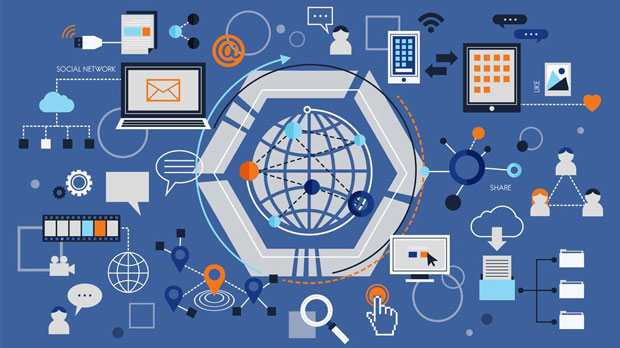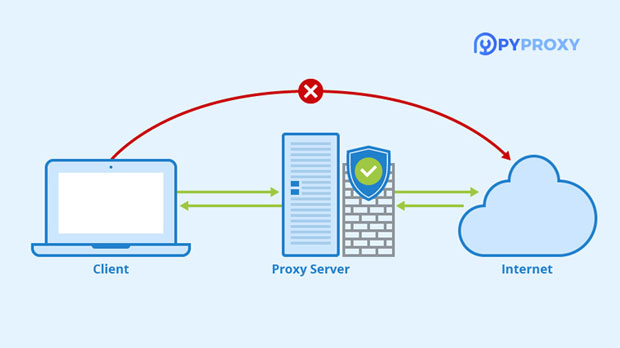In the context of a wireless network, the stability of residential proxies in the UK plays a significant role in ensuring a seamless and uninterrupted browsing experience. Wireless networks are often prone to fluctuations in signal strength, interference, and congestion, which can impact the reliability of the connection. When using residential proxies in such environments, these factors become even more critical. Understanding how residential proxies perform under these conditions, their advantages, and the challenges they present is essential for users who rely on them for privacy, security, and access to geo-restricted content. This article will explore the key aspects of residential proxy stability in a wireless network setting in the UK, analyzing both the benefits and limitations of their use. Introduction to Residential ProxiesResidential proxies are IP addresses assigned by Internet Service Providers (ISPs) to real devices, as opposed to data center proxies, which are often associated with virtual servers. These proxies offer a more authentic and less detectable browsing experience. They are highly valued for tasks that require high anonymity, such as web scraping, accessing restricted content, and maintaining privacy while browsing the internet.When used in wireless network environments, residential proxies face a unique set of challenges. The stability of the connection can be influenced by various factors such as network congestion, signal interference, and the strength of the wireless signal itself. These elements can cause fluctuations in speed and connection quality, potentially affecting the overall performance of the proxy.Factors Affecting Stability of Residential Proxies in Wireless NetworksSeveral key factors determine the performance and stability of residential proxies in wireless networks. These include:1. Network Congestion Wireless networks, particularly in urban areas like the UK, are often subject to congestion. Multiple devices sharing the same frequency band can cause delays, signal interference, and dropped connections. This becomes especially problematic when using residential proxies, as the proxy connection may not be able to maintain stability during high traffic periods. As the demand for wireless bandwidth increases, the likelihood of encountering issues such as latency spikes and timeouts grows.2. Signal Interference Signal interference is another factor that can affect the stability of wireless connections. Devices that operate on similar frequencies, such as microwaves, Bluetooth devices, and other wireless networks, can create interference, leading to disruptions in the proxy connection. This is particularly relevant in the context of residential proxies, as they are dependent on local ISP infrastructure and may experience signal degradation if the wireless environment is crowded or not optimized.3. Wireless Network Range and Strength The strength of the wireless signal directly impacts the stability of the connection. A weak or fluctuating signal can lead to unstable proxy performance, causing delays or failures in maintaining the connection. The further the device is from the router, the more likely it is to experience issues. In residential setups, the distance between the router and the device, as well as physical obstacles like walls, can exacerbate these challenges.4. Router Quality and Configuration The quality and configuration of the router can also have a significant effect on the performance of residential proxies. Modern routers that support advanced wireless standards like Wi-Fi 5 (802.11ac) or Wi-Fi 6 (802.11ax) are better equipped to handle high-speed internet and maintain stable connections even in congested environments. However, older or poorly configured routers may struggle to provide reliable connections, especially when multiple devices are connected simultaneously.Advantages of Residential Proxies in Wireless NetworksDespite the challenges, residential proxies offer several advantages, particularly in the context of a wireless network environment in the UK:1. Improved Anonymity and Security One of the primary benefits of residential proxies is their ability to enhance online anonymity and security. Wireless networks are inherently less secure than wired networks, as the data is transmitted over radio waves that can potentially be intercepted. By using a residential proxy, users can mask their IP addresses, ensuring that their browsing activity remains private and secure, even in less secure wireless environments.2. Access to Geo-Restricted Content Residential proxies are ideal for accessing geo-restricted content. In the UK, users may encounter content that is limited based on their geographic location. By routing traffic through residential IPs, users can bypass these restrictions, accessing websites and services as if they were in a different region. This is especially useful for streaming services, e-commerce websites, and social media platforms that impose geographic limitations on content availability.3. Less Detection by Websites Unlike data center proxies, residential proxies are harder for websites to detect. Since they use IP addresses provided by ISPs to real devices, they are less likely to be flagged as suspicious or blocked. This makes residential proxies more effective in scenarios like web scraping, where reliability and undetectability are critical.Challenges and Limitations of Residential Proxies in Wireless NetworksWhile residential proxies have many benefits, their use in wireless network environments in the UK also presents certain challenges:1. Connection Instability During High Traffic Periods As mentioned earlier, wireless networks are vulnerable to congestion. During peak hours, when multiple users are accessing the internet simultaneously, the network may slow down. This can affect the stability of residential proxies, causing disruptions in the proxy connection. For tasks that require consistent performance, such as video streaming or real-time web scraping, this can be a significant issue.2. Signal Degradation and Latency Wireless signals can degrade over distance or due to interference from physical obstacles. When the signal strength is weak, residential proxies may experience higher latency, leading to slower connection speeds and longer response times. This can impact tasks that require low-latency connections, such as online gaming or financial trading.3. ISP Throttling Some ISPs may throttle internet speeds during times of high usage or if they detect heavy data consumption. Since residential proxies use IP addresses provided by ISPs, users may be subject to throttling if their usage is deemed excessive. This can reduce the stability of the proxy connection, particularly in wireless networks with variable bandwidth.Optimizing Residential Proxy Performance in Wireless EnvironmentsTo ensure the best performance of residential proxies in wireless networks, users can take several steps to optimize their setup:1. Upgrade Router and Use Optimal Channels Upgrading to a modern router with support for Wi-Fi 5 or Wi-Fi 6 can significantly improve the stability and speed of the wireless network. Additionally, choosing the least congested frequency channel can help reduce interference from other devices.2. Use a Wired Connection for Critical Tasks For tasks that require the highest stability, such as high-frequency trading or real-time data analysis, consider using a wired Ethernet connection rather than relying on wireless networks. This eliminates the variability introduced by wireless connections and ensures a more stable proxy performance.3. Monitor Network Traffic Monitoring the wireless network for congestion can help users identify peak usage times and avoid slowdowns. By scheduling proxy-heavy tasks during off-peak hours, users can minimize the risk of instability due to network congestion.In summary, residential proxies in wireless network environments in the UK offer both benefits and challenges. While they provide enhanced security, anonymity, and access to geo-restricted content, they are also subject to issues like network congestion, signal interference, and latency. By understanding these factors and taking steps to optimize the wireless setup, users can improve the stability and reliability of their residential proxy connections. For those who rely on high-performance proxy usage, such as web scraping or streaming, a carefully configured wireless environment or a shift to a wired connection can make a significant difference.
Sep 15, 2025



































































